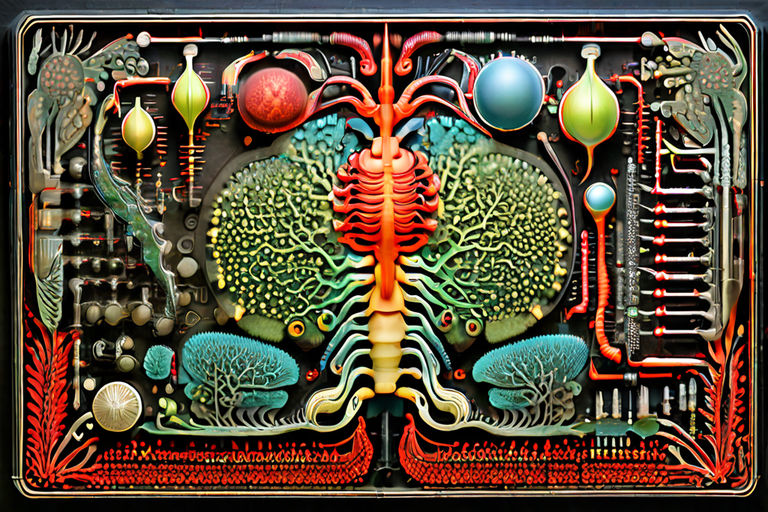Introduction
In the realm of biology, transcription stands as one of the fundamental processes that unravel the mysteries of life at a molecular level. Understanding transcription is akin to deciphering the language of life itself. This article delves into the intricacies of transcription, shedding light on its definition, mechanisms, and significance in the realm of biology.
Unveiling the Mechanisms of Transcription
What is Transcription?
Picture your DNA as a giant instruction manual for building and maintaining your body. It’s packed with all the details you need to make you who you are, from the color of your eyes to the shape of your nose.
Now, imagine you want to make a copy of just one chapter from this manual. This is where transcription comes in This is like making a photocopy of a single chapter so that you can use it without damaging the original

During transcription, a special enzyme called RNA polymerase acts like a copy machine. It reads instructions from a specific section of your DNA and makes a complementary copy in the form of a molecule called RNA (ribonucleic acid). This RNA molecule is similar to DNA but with some differences, such as using a slightly different language.
Why do we need to copy this RNA? Well, think of it as a messenger. DNA is safely tucked away in your cell’s nucleus, but RNA can travel outside the cell’s cytoplasm where action takes place.
Once the RNA copy is made, it is ready to be used as a template for making proteins. This is where translation comes into play, which is like turning that copied chapter into a real product—like building a Lego model based on the instructions you copied.
Initiation of Transcription
Transcription begins when a special enzyme called RNA polymerase binds to a specific region of your DNA called a promoter. Think of the promoter as a “start here” sign for transcription.
Once the RNA polymerase finds its place at the promoter, it signals the start of the transcription process. This is the place where the actual copying of DNA into RNA begins, much like the starting line of a race.
From there, RNA polymerase begins reading the DNA sequence and following the instructions encoded in the DNA to create a complementary RNA molecule.
Elongation Phase

After starting at the promoter region, RNA polymerase gets to work, moving along the DNA template like a busy little worker bee. It reads the DNA sequence and begins assembling a matching RNA strand following the instructions encoded in the DNA.
This stage of building the RNA molecule is called elongation, similar to stretching a piece of dough to make it longer. RNA polymerase continues, adding more and more RNA nucleotides to the growing strand until it reaches a particular signal.
When it hits this signal, known as the termination signal, it’s like reaching the end of the road. This tells RNA polymerase that it’s time to wrap things up and stop adding nucleotides to the RNA chain.
So, after initiation sets things in motion, elongation is where the real work happens as RNA polymerase zips along the DNA, cranking up a complementary RNA strand until it hits the termination signal and calls it a day.
Termination of Transcription
As soon as the transcription is finished, it enters the completion stage, which is like the final chapter of the process. At this stage, RNA polymerase detects specific signals that indicate it is time to stop.
These termination signals act as a sort of “finish line” for RNA polymerase. When it encounters these signals, it knows it has reached the end of the road for a specific stretch of DNA.
Once the termination signals are recognized, RNA polymerase releases the newly formed RNA transcript, freeing it for its trade in the cell.
So, in the grand scheme of transcription, the termination phase is where everything wraps up nicely, RNA polymerase identifies the signals that mark the end of the journey and lets the RNA transcript go on its way.
Significance of Transcription in Biology
Gene Expression Regulation

Transcription is a key player in the complex dance of gene expression regulation within cells. Its main function is to make RNA molecules, which are crucial for building proteins and performing all kinds of cellular functions.
By regulating transcription, the cell can adjust the amount of RNA produced. This, in turn, directly affects the amount of protein that is produced. And since proteins are the workhorses of cells, involved in everything from cell division to metabolism, this regulation is incredibly important.
Think of transcriptional regulation as the conductor of an orchestra, carefully directing which instruments to play when and how loud. It’s about maintaining harmony and balance between cells, making sure the right protein is produced in the right amount at the right time to keep everything running smoothly.
Cellular Differentiation
Cellular differentiation is like the magic trick that turns a single, ordinary egg into a dazzling array of specialized cell types. And guess who’s pulling the strings behind the scenes? You guessed it – transcriptional regulation!
As cells differentiate and take on specific roles in the body, transcriptional regulation moves up the plate. It’s like the director of a blockbuster movie, deciding which actors (Jeans) get the spotlight and which fade into the background.
Through a carefully orchestrated dance of activation and repression, transcriptional regulation directs cells to different pathways of specialization. It’s like a master chef adding the right ingredients to create a gourmet dish—except in this case, the ingredients are genes, and the dish is a fully formed cell with its own distinct identity and function.
Thus, during cellular differentiation, transcriptional regulation directs the symphony of gene expression, ensuring that each cell plays its part in creating the masterpiece of life.
Disease Pathogenesis
Dysregulation of transcriptional mechanisms often underlies the pathogenesis of various diseases, including cancer and genetic disorders. Understanding transcriptional abnormalities provides insights into disease etiology and facilitates the development of therapeutic interventions.
Exploring Transcription Definition Biology
Transcription Definition Biology elucidates the intricate process through which genetic information encoded in DNA is transcribed into RNA molecules. This transcriptional machinery serves as a cornerstone of cellular function, governing gene expression and orchestrating the intricate dance of life at a molecular level.
FAQs
How does transcription differ from translation?
Transcription involves the synthesis of RNA molecules from a DNA template, whereas translation entails the conversion of RNA into proteins.
What role does RNA polymerase play in transcription?
RNA polymerase is the enzyme responsible for catalyzing the synthesis of RNA molecules during transcription. It binds to the promoter region of a gene and facilitates the elongation of the RNA strand.
Can transcription be influenced by external factors?
Yes, transcription can be influenced by various external factors, including environmental cues, cellular signaling pathways, and epigenetic modifications.
What are the different types of RNA produced during transcription?
During transcription, three main types of RNA are synthesized: messenger RNA (mRNA), transfer RNA (tRNA), and ribosomal RNA (rRNA), each serving distinct roles in protein synthesis.
How does transcription contribute to cellular differentiation?
Transcriptional regulation plays a crucial role in cellular differentiation by determining the gene expression profiles characteristic of specific cell types, thereby driving the process of specialization.
What are the implications of transcriptional dysregulation in disease?
Dysregulation of transcriptional mechanisms can lead to aberrant gene expression patterns implicated in various diseases, including cancer, neurodegenerative disorders, and metabolic syndromes.
Transcription stands as a cornerstone of biological processes, orchestrating the intricate interplay between genes and proteins that underlies the complexity of life. By unraveling the mechanisms of transcription, researchers gain profound insights into cellular function, disease pathogenesis, and therapeutic interventions, paving the way for groundbreaking discoveries in the realm of biology.


